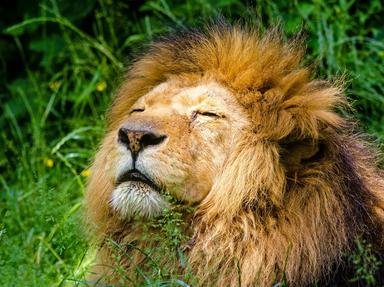Quiz Answer Key and Fun Facts
1. Characterised by a dog-like muzzle, large canines and close-set eyes, what is the name of this African primate?
2. What is the name of this nocturnal insectivore from Africa?
3. Which one is the feliform carnivore from Africa?
4. Which African animal lends its name to a seal, a shark and a gecko?
5. Which of these is an African omnivore?
6. Which of these antelopes is African?
7. What is the name of this primate, largest of the Old World monkeys?
8. Which one is the African native?
9. Name the African herbivore which is sometimes called a dassie.
10. Which one is the 'percussive' ungulate from Africa?
Source: Author
suomy
This quiz was reviewed by FunTrivia editor
guitargoddess before going online.
Any errors found in FunTrivia content are routinely corrected through our feedback system.

